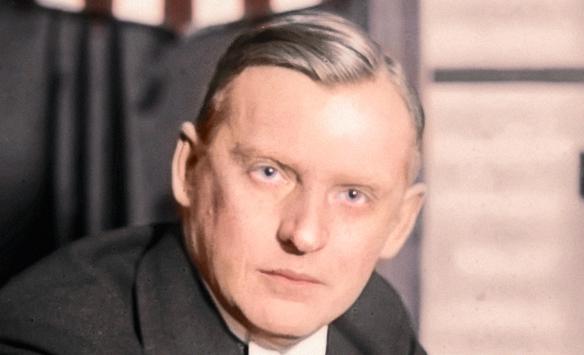
Alekhine's Defense: World Champion Openings
Alexander Alekhine won the title from Jose Raul Capablanca in their 1927 match. The Franco-Russian master had an unusually wide opening repertoire compared to the earlier champions, and he loved to experiment with different openings.
So while Alekhine did use the Queen's Gambit Declined -- especially in very important situations with strong opponents, such as his match with Capablanca -- he also frequently used openings such as the Queen's Indian and Nimzo Indian (which were new at the time), the Dutch Defense, and even the Benoni.
Likewise, against 1.e4 he may have often played the classical counter 1...e5, but he also often used more unbalancing defenses, such as the Sicilian, French, and the major opening named after him: the Alekhine Defense.
While we have seen that some openings are named after masters who only used the opening once or twice, the Alekhine Defense actually had a fairly significant role in Alekhine's repertoire, as he played it at least 20 times. In some ways, this defense mimics Alekhine's character (he loved to drink and smoke and had an eventful life) -- it is rather freewheeling but also somewhat troubled.

via Wikipedia
Alekhine did believe that 1...Nf6 was a sound move. In the notes to his game with Endre Steiner he wrote the following:
"This new defence was played for the first time by myself in a consultation game at Zurich (August, 1921), and was introduced into master practice shortly afterwards at the Budapest Tournament in September of the same year.
"Its correctness now seems perfectly established. One of the most searching proofs of its vitality lies in the fact that Dr. Emmanuel Lasker, ex-champion of the world, although openly opposed to this defence, successfully adopted it against Maroczy at the New York Tournament (March-April, 1924), after having tried in vain to demolish it."
Naturally, Alekhine did not invent the Alekhine Defense, which occurs on move one of a game of chess. He was, however, the first top-level master to use it in tournament play.

The first occurrence of 1...Nf6 in my database is a game between Madame de Remusat and one chess player, Napoleon Bonaparte, from Paris, 1802. Madame de Remusat was Napoleon's mistress.
But consider that the two lovebirds have another recorded game, which went like this:
Look familiar? Well, take what you will from these games. It appears likely that the games attributed to Napoleon did not actually go as the record says.
Of course, the Alekhine Defense was probably "invented" much earlier, not long after the new rules that allowed the pawns to move two squares on their first move were introduced. In other words: "So you will make use of the new rules and push your king-pawn two squares? Then I will immediately lay siege to it."
The real inventor of 1...Nf6 is unknown, but over half a millennium later the move obtained a name -- that of the world champion.
The consultation game mentioned by Alekhine above was against Donegan, Mueller, and Zimmermann, and took place in Zurich, 1921. The game was actually quite interesting:
The introduction of the Alekhine's Defense to top-level tournament play (some lower-level masters, such as Adolf Albin and Wilhelm Cohn, had actually used it previously) took place in the Budapest 1921 tournament. Its first outing was against Fritz Saemisch. The surprising move caused Saemisch to play it very safe and make a colorless draw. The game is very boring, but here it is for historical reasons:
A few days later, Alekhine had another chance to use his opening, against Endre Steiner. This time the game was far more interesting, with Alekhine showing nice technique to extract a win in the ending:
Alekhine used 1...Nf6 from time to time over the years, for instance winning the following instructive positional game:
Of course, playing 1.e4 sometimes, Alekhine could also occasionally meet his own defense. Perhaps some of his opponents even appreciated the irony of playing the opening named after their opponent? Thus in the Kemeri 1937 tournament, Samuel Reshevsky played 1...Nf6 against him as Black. The game reached the following position, where Alekhine won with a typical combination. Now you can try to find it:
Personally, I think you can hardly call yourself a chess player if you don't try the Alekhine's Defense at least once. It isn't surprising that this fanciful defense would be introduced by the mercurial fourth world champion.
Next week, we will see the contributions of the fifth world champion, Max Euwe.






